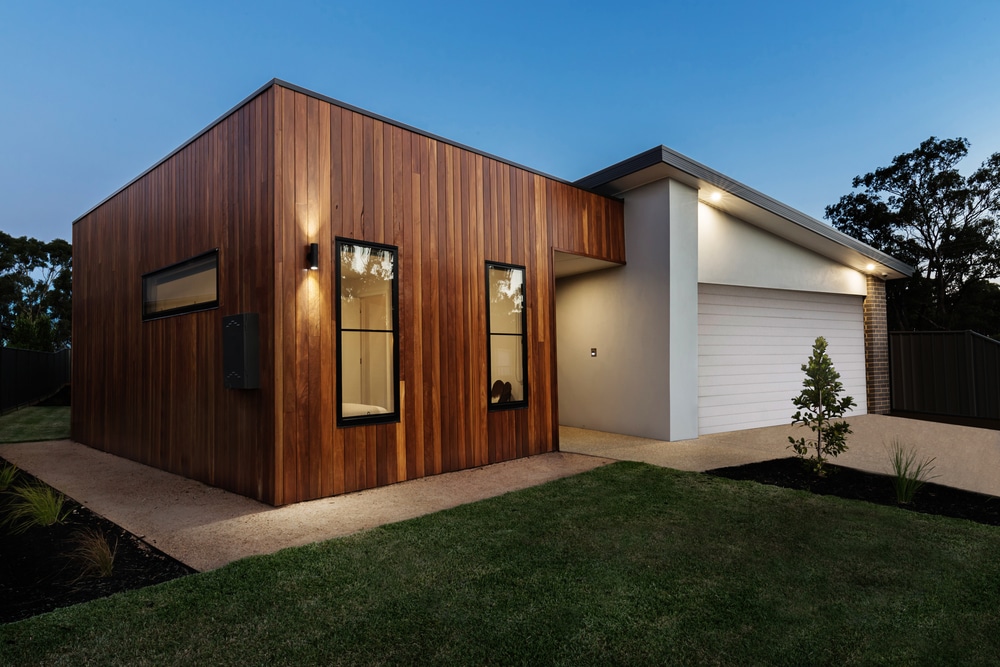
27 Jan FAQ About Cladding in Toronto
Cladding in Toronto
The Industrial Revolution, which began in the late 18th century, marked the beginning of a shift in the way metals were employed in building.
Metals were originally primarily utilized for small-scale fabrication, such as the production of fasteners and railings. As technology advanced, metal rapidly made its way into structural functions such as wall metal cladding, which is now commonplace.
Nowadays, metal cladding is one of the most often used methods of incorporating metal into a structure.
Aluminum first appeared in architectural applications in the mid-1930s. However, it wasn’t until after World War II that it began to gain widespread acceptance. Aluminum metal cladding for residential and commercial structures is one of the most prevalent applications for this material today.
In this article, we’ll discuss the many applications for metal cladding as well as some of the most often asked questions about this type of product. Let’s get started…
What Is The Definition Of Metal Cladding?
There are many different kinds of siding that may be used on a structure. The use of metal cladding is one example.
Cladding is the process of applying one material over another to create a layer of protection to the structure. Cladding is used in the construction industry to give a degree of thermal insulation and weather protection, as well as to enhance the aesthetics of buildings and structures. Exterior cladding is the material that is used to protect the exterior surface of buildings as a protective outer covering. Walls, windows, doors, and trim are examples of what can be utilized with cladding material.
The Benefits Of Metal Cladding And Siding
Aside from designing the roof, the siding of a house or business’s walls is a significant decision to make. In order to make that decision you can choose metal cladding/siding as an advantage for a structure. Here are some of the reasons for choosing metal cladding:
- To modernize and enhance the look;
- To reduce the need for maintenance;
- To protect the structure;
- To provide insulation are the buildings.
Metal cladding is now being used to help buildings become more environmentally friendly. Nowadays, the majority of products are long lasting, need little maintenance, and are recyclable. When it comes to decreasing waste and mitigating environmental damage, the ability of a resource to be reused is an essential issue to take into account.
How Much Does Metal Cladding Cost?
When it comes to the cost of a metal cladding side, there are a range of variables to consider prior to installation.
The price you pay is determined on the kind of metal material you choose, the complexity of the installation, and the location of the structure being worked on, among other factors. In general, the cost to install metal cladding as siding is between $18.00 and $45.00 per square foot on a residential property.
What Are The Different Types Of Metals That May Be Used For Metal Cladding And What Are Their Advantages?
It is possible to pick from many different sorts of materials when it comes to metal cladding.
Each form of metal has its own set of advantages and disadvantages. Aspects such as your desired aesthetic, your local climatic circumstances, and your financial situation will all affect your decision.
In metal cladding, the following are some of the most often encountered materials:
Stainless Steel Panels Cladding
Stainless steel Cladding is a kind of steel cladding that has an outer coating of chromium oxide and is used for exterior applications. This is due to the presence of chromium in the metal, which makes it corrosion resistant. Because of its glossy appearance, stainless steel is a popular option.
The advantages of Stainless Steel cladding:
- This type of material retains its color and finishes well.
- In comparison to other forms of metal panels, steel siding has a longer life expectancy.
- It is also a dent-resistant metal that is a good choice for long-term results.
The disadvantages of Stainless Steel cladding:
- Contrary to popular belief, steel is immune to rusting. If you reside near the shore, however, you should be aware that steel will rust regardless of the finish applied to it.
- Using this style of siding may cost more than other materials available on the market.
Aluminum Composite Panels Cladding- Acm Panels
This form of metal siding has a natural resistance to corrosion, making it an excellent choice for outside use. As a result, aluminum composite panels are becoming more popular for use as cladding in contemporary houses and businesses.
The advantages of Aluminum Panel cladding:
- Aluminum siding is a more affordable option to other forms of metal cladding.
- Compared to stainless steel and other metals, it is more pliable and less expensive to make and install.
- It also comes in a wide range of colors and textures.
The disadvantages of Aluminum Panel cladding:
- Over time, the polish of aluminum fades or becomes chalky.
- This kind of metal is softer than other sorts and more prone to dents and scratches than the other varieties.
Galvanized Steel Panel Cladding
This metal is protected against corrosion by a covering of zinc. As with chromium on stainless steel, this helps to prevent corrosion in the same manner as it does on aluminum.
The advantages of Galvanized Steel Panels:
Spangle is a term used to describe the peculiar mottled appearance of galvanized steel.
The disadvantages of Galvanized Steel Panels:
If you reside near the shore, galvanized steel may ultimately succumb to rust and corrosion.
Titanium Panel Cladding
Lightweight and strong, this metal is popular among architects because of its reflecting surface and reflective properties. It has been employed in a large number of contemporary residential and commercial structures.
The advantages of Titanium Panel cladding:
Over time, titanium develops a protective oxide layer on its surface, which aids in the metal’s resistance to corrosion.
The disadvantages of Titanium Panel cladding :
This style of cladding needs more upkeep than other types of siding. It has the potential to stain brown if not cleaned correctly.
Zinc Panel Cladding
Zinc siding is yet another common option for siding since it is both inexpensive and resistant to rust.
The advantages of Zinc Panel cladding:
This material has a number of advantages, including the fact that it is waterproof.
Siding has certain self-healing capabilities, such that if damaged, it will ultimately erase the scratch.
The disadvantages of Zinc Panel cladding:
This form of metal cladding might be prohibitively costly.
Copper Panel Cladding
This metal is amazingly lightweight while still being quite robust. Copper, like the majority of the other cladding materials, is also recyclable in some form. Copper cladding is particularly corrosion-resistant, and it can withstand exposure to salt water and places with a high concentration of acid rain.
The advantages of Copper Panel cladding:
Copper Panel cladding is a less expensive option to metal cladding siding.
The disadvantages of Copper Panel cladding:
Over time, the surface of the copper panel cladding becomes greenish in color.
Metal Cladding Offers A Wide Range Of Performance Advantages
Because of its resilience, metal is an excellent choice for cladding applications.
Contemporary Wall Metal cladding may help a building persist for decades while requiring little upkeep. However, certain metals, such as aluminum, are softer than others.
All metals are resistant to flames. As a result, metal cladding used as siding is a more effective safety element for any building. Even if a house is hit by lightning or is exposed to wildfires, it will remain structurally sound.
Metal cladding, in contrast to the majority of other siding materials, is ecologically benign. Metal is reusable and recyclable, making it an excellent alternative for anybody who is concerned about the environment.
What Are The Advantages Of Using Residential Metal Siding?
Longevity: Residential steel siding is a sturdy and exceptionally long-lasting material. It is readily adapted to various environmental conditions and is resistant to cracking, warping, and corroding when properly maintained. Residential steel siding is one of the most durable building materials available because of its ability to endure extreme weather conditions such as high-speed winds and violent thunderstorms.
Low Maintenance: Performing maintenance on any area of your property generally entails depleting your money and devoting a significant amount of time. Metal siding, in contrast to other types of residential siding, needs extremely minimal upkeep. Residential steel siding, in contrast to other materials, does not absorb heat or moisture, and as a result, there is no mold or fungus development, and there is no need to clean your siding on a yearly basis. Simply enjoy it!
Efficient in Terms of Energy: Residential metal siding is energy efficient in the same way that metal roofs are. Because of its reflecting characteristics, it is capable of diverting the sun’s ultraviolet radiation away from your house. Homeowners may save money on their energy costs as a result.
Residential Metal Siding Design: With a plethora of color and style possibilities, you’re sure to discover a metal siding option that complements your home’s overall design scheme. Because metal siding has a lifespan of more than 50 years, you’ll want to be sure you select a siding choice that is both aesthetically pleasing and durable.
Pests Despise It: If you’ve ever had a pest issue, you know how much pests like hiding behind siding and other building materials. Residential steel siding, in contrast to other materials such as wood, is undesirable to pests such as termites. With metal siding, you may eliminate the need to spray for pests.
Does Metal Siding Attract Lightning?
This is a widespread myth concerning both metal roofs and metal siding, and it is worth mentioning. A non-combustible and a conductor of electricity, metal is not as vulnerable to lightning strikes as other types of material because of its properties. When lightning hits, it seeks the route of least resistance, which means it is more drawn to whatever is nearest to the sky than it is to something that is heavier in weight.
When It Comes To Metal Siding And Metal Cladding, What’s The Difference?
The metal cladding and siding utilized by Cladding Pro’s crew are interchangeable terms in the industry. They both refer to the same item, which is an outer covering that protects the outside of a house or structure from the elements. We’re talking about the same, long-lasting alternative to secure your properties for many years to come whether we’re referring to siding or cladding in the same sentence.
Is It Possible To Place Metal Over Shingles?
When replacing a shingled roof with a new metal roof, our staff never advises putting it directly over the old one. There are several advantages to ripping off the old roof rather than installing a new one directly on top of it, including the ability to detect underlying faults, improving the lifetime of your new roof, boosting the value of your property, and more.
Leaving your old roof on top of your new one might generate a slew of problems in the future, some of which may need a premature roof tear-off.
Consider Using Metal Cladding For Your Next Construction Project
Metal cladding is an excellent cost-effective and environmentally friendly option for your new house or commercial building construction, as well as for resurfacing and refinishing your existing structure without requiring structural alterations.
When it comes to external paneling, metal cladding offers a number of advantages over other materials. Perhaps the most significant advantage that metal cladding offers is that it is ecologically friendly. Pollution is becoming an increasingly severe issue, and since metal is 100 percent recyclable, it is an excellent option in this regard.
Metal cladding is now available in a range of colors and textures thanks to advancements in technique and technology. It is now available to purchase metal cladding that is intended to seem similar to wood in appearance. A homeowner seeking wood paneling without the risk of termite infestations, cracking in the cold, or fire will find it to be an excellent choice for their building.
Looking To Learn More About Cladding?
We hope these FAQs about cladding in Toronto were helpful. For those of you who live in the Greater Toronto Area (GTA) or Ontario and are interested in having metal cladding installed on your home or business, Claddingpros can assist you with any questions you may have. To assure high-quality Cladding manufacture and installation for any project size, we have a full-stack team of architects, carpenters, installers, trained tradespeople, and in-house manufacturing facilities.
Claddingpros will be thrilled to be able to assist you in getting started on your design makeover!





Sorry, the comment form is closed at this time.